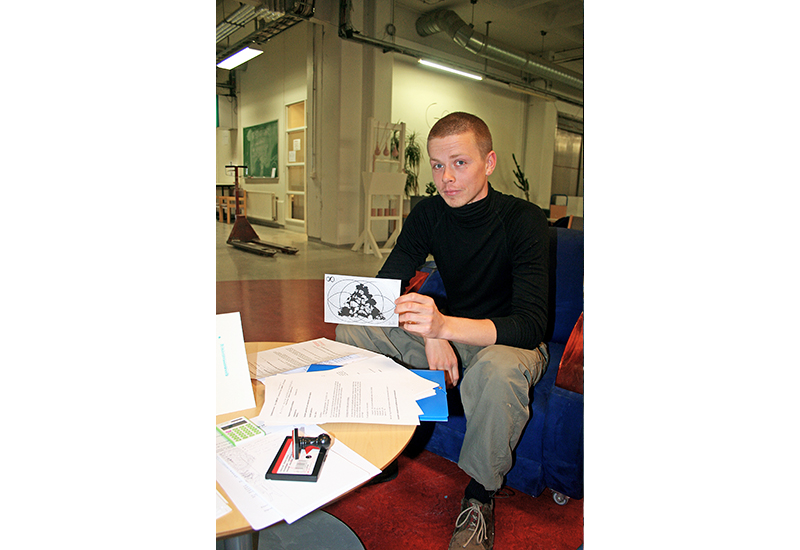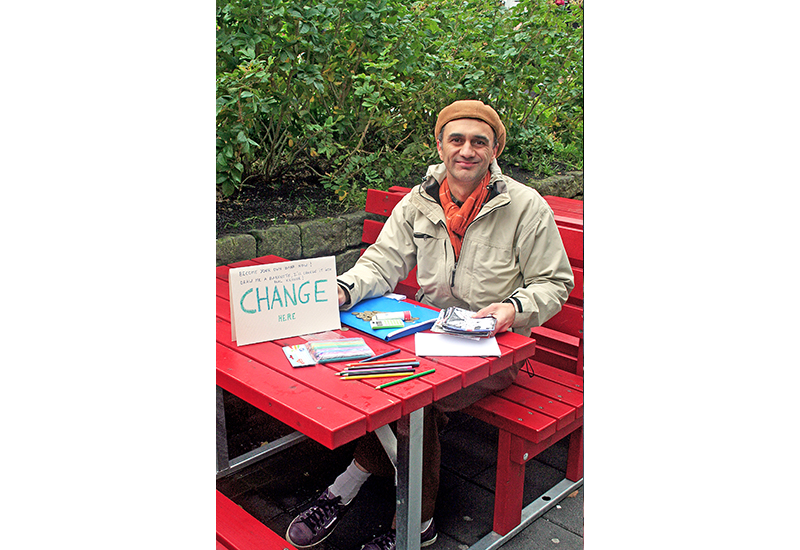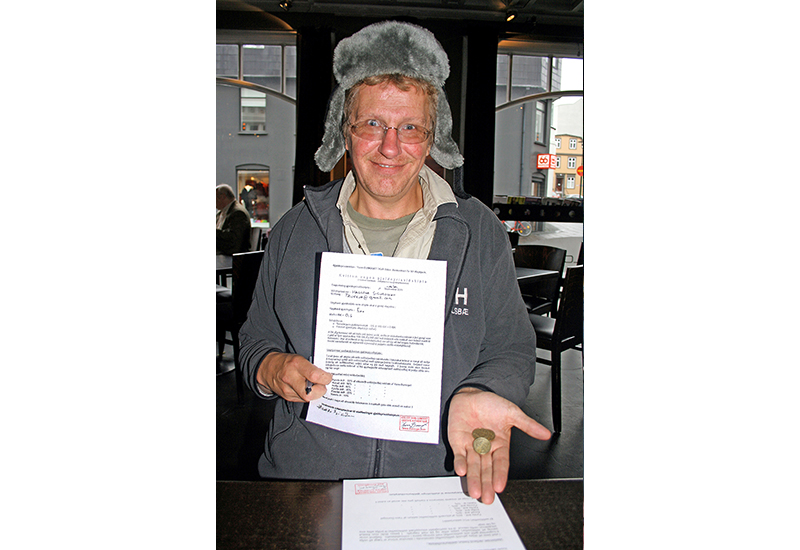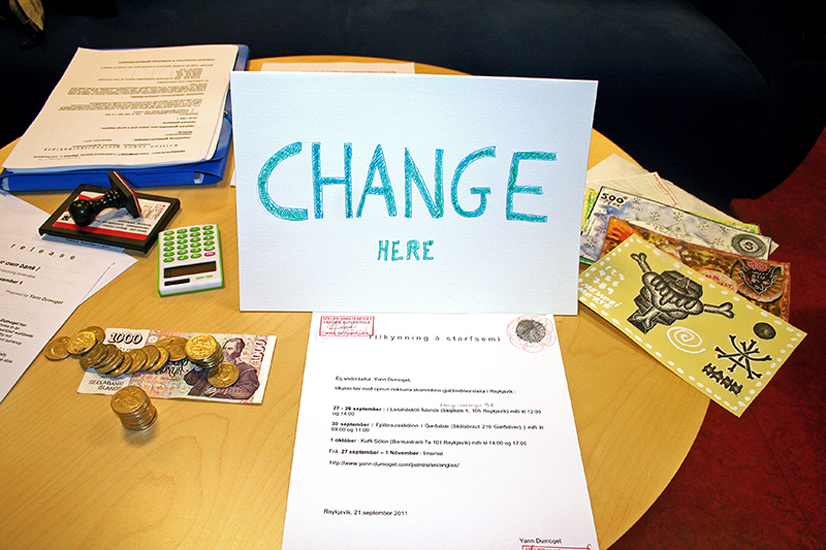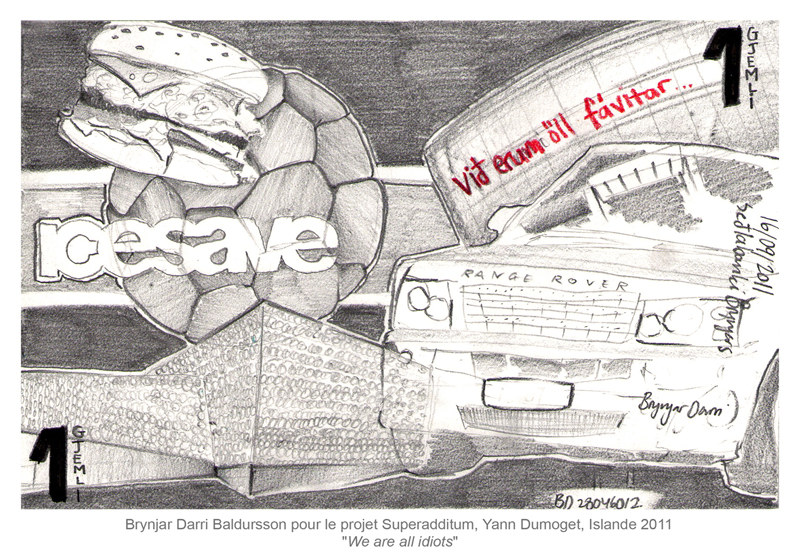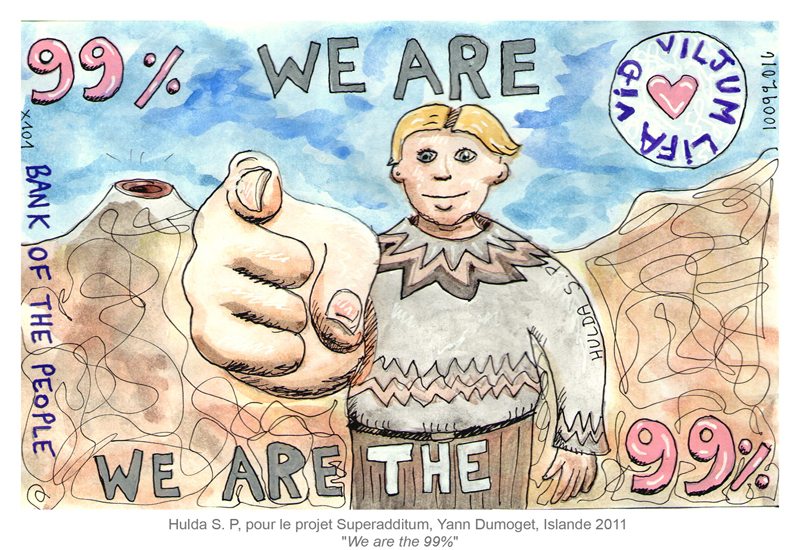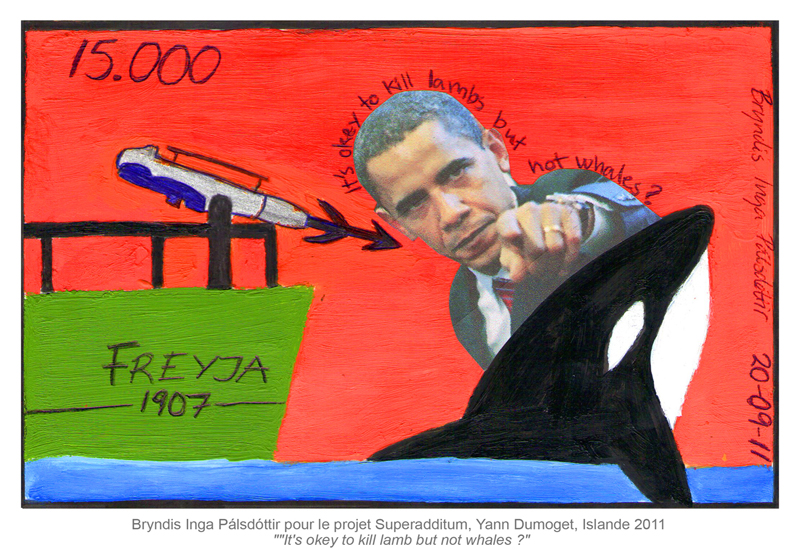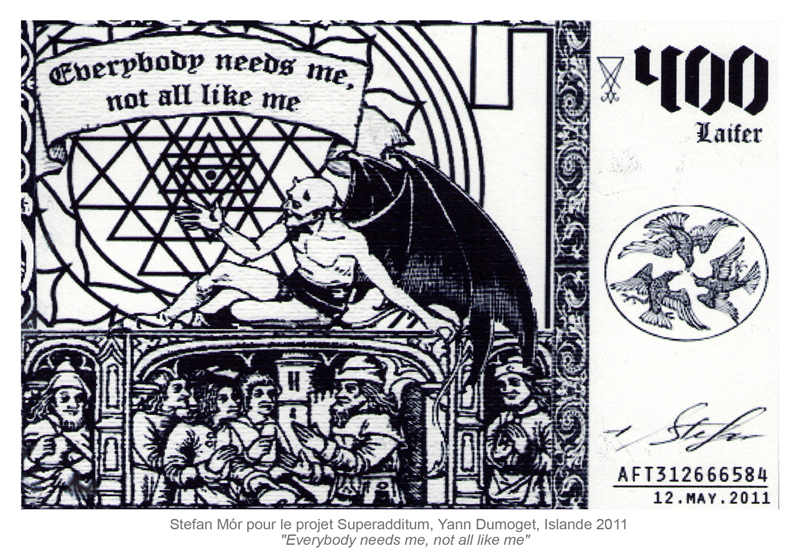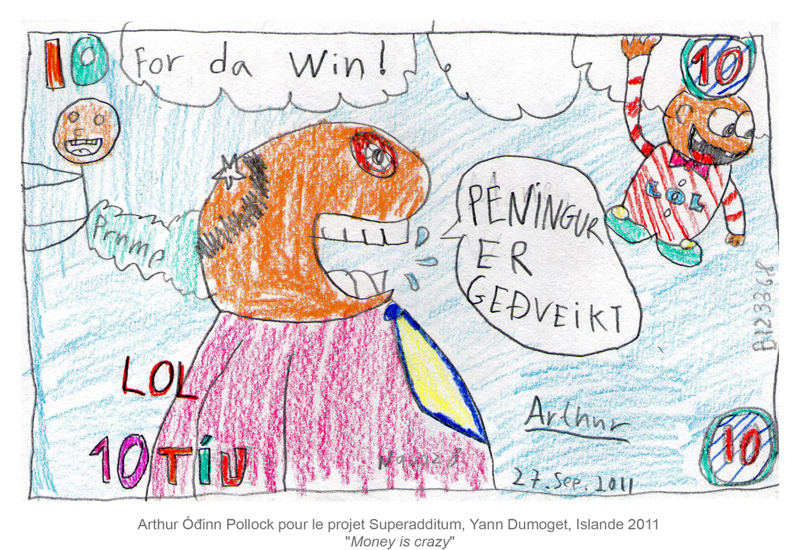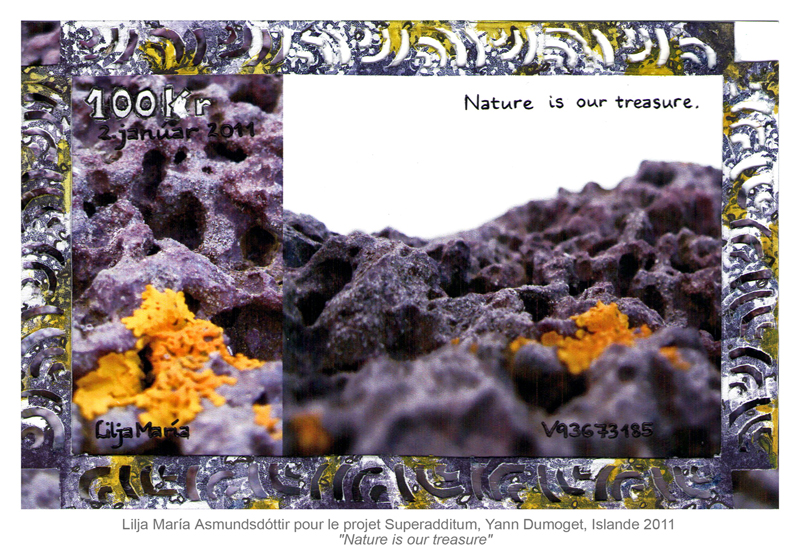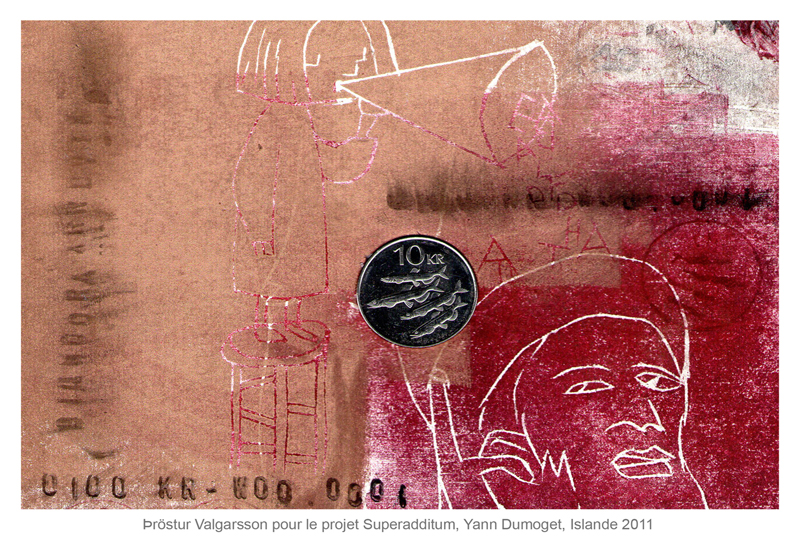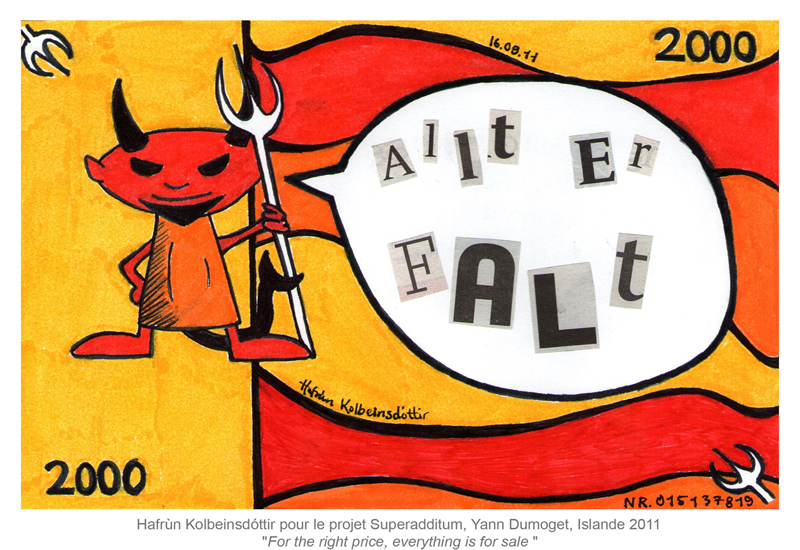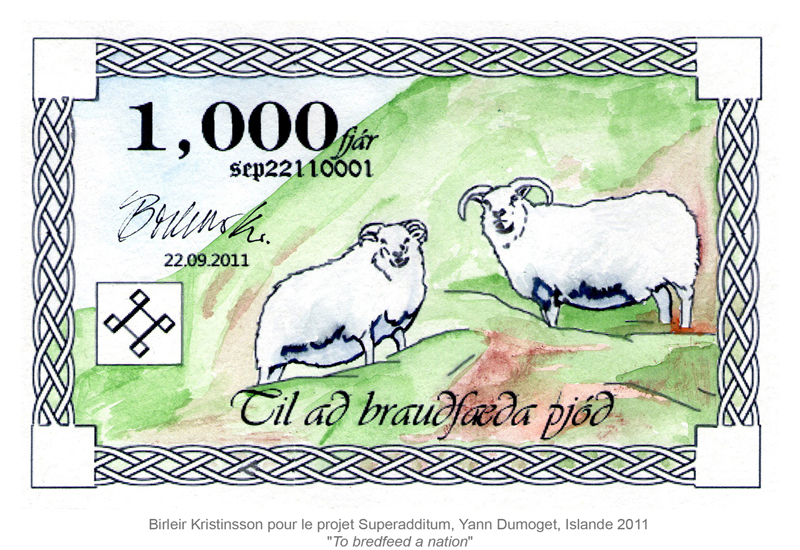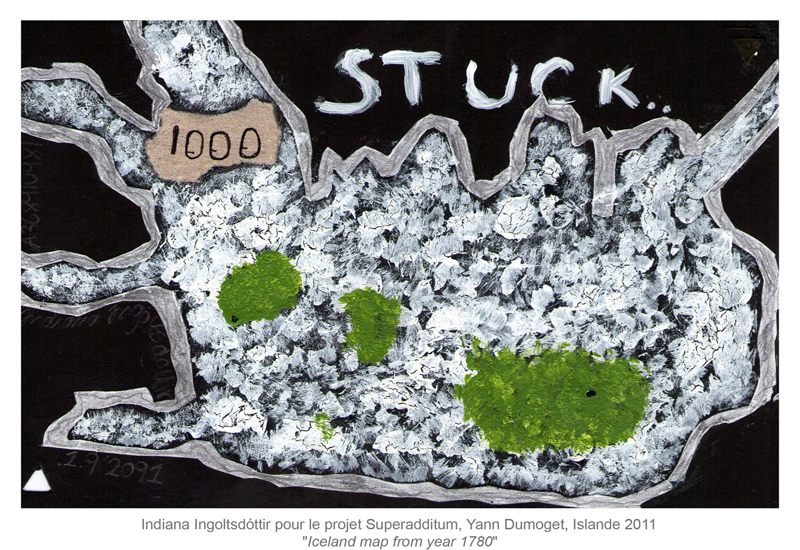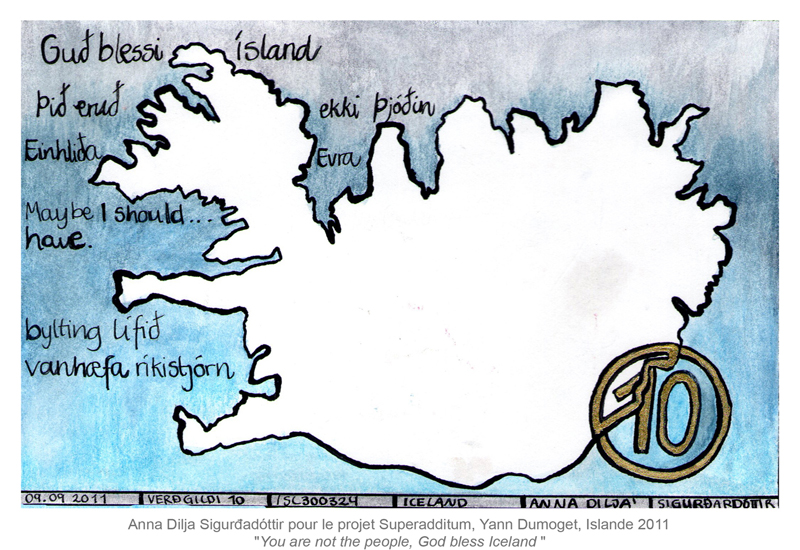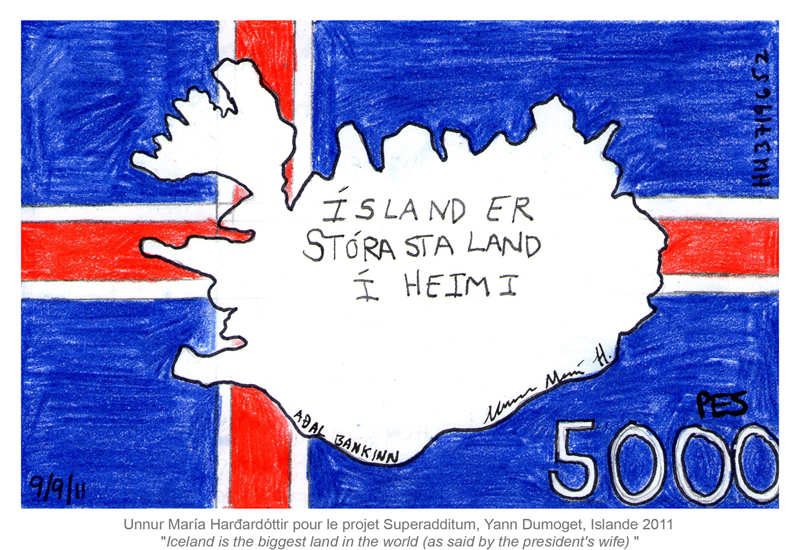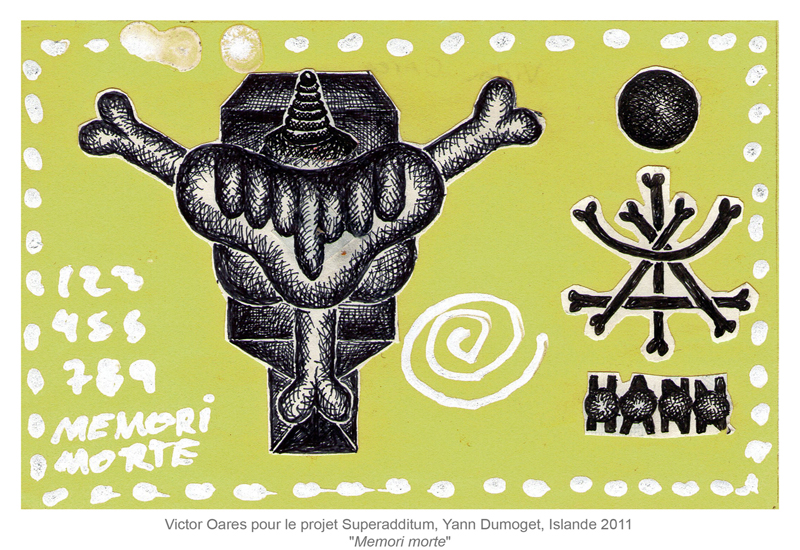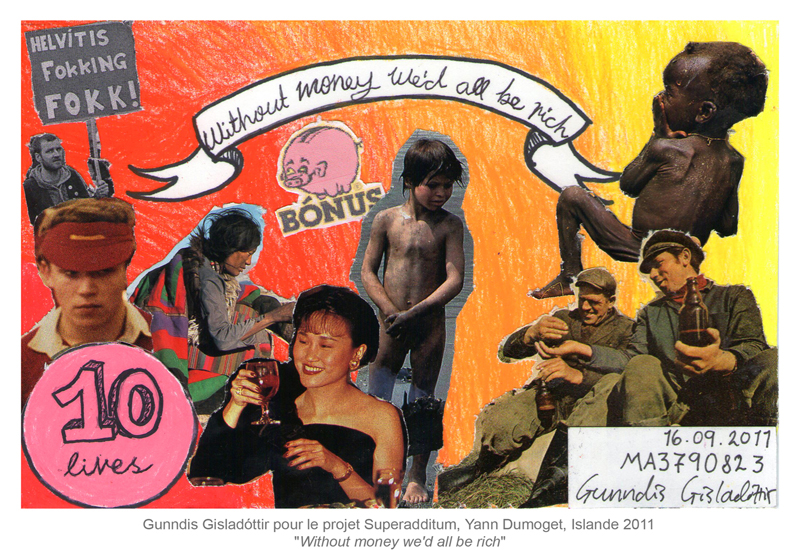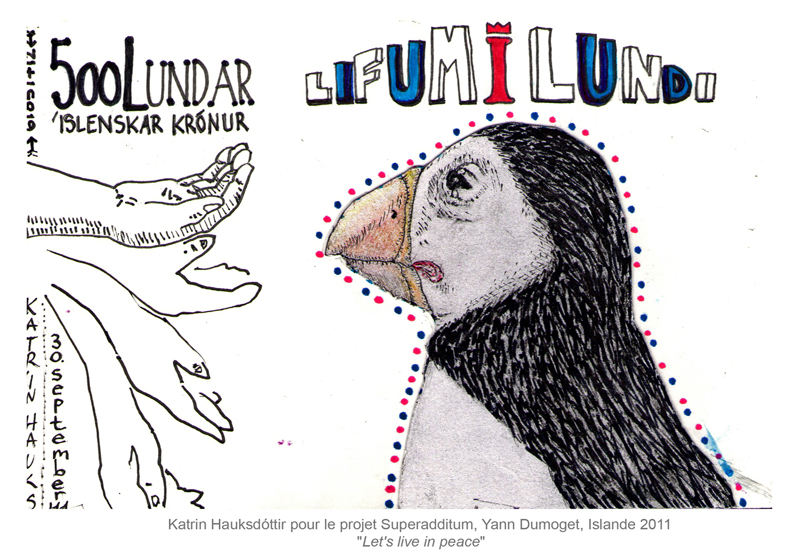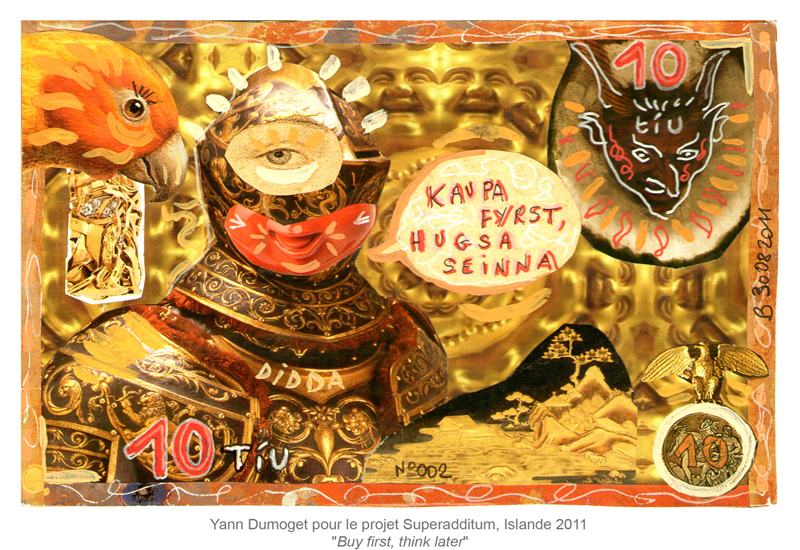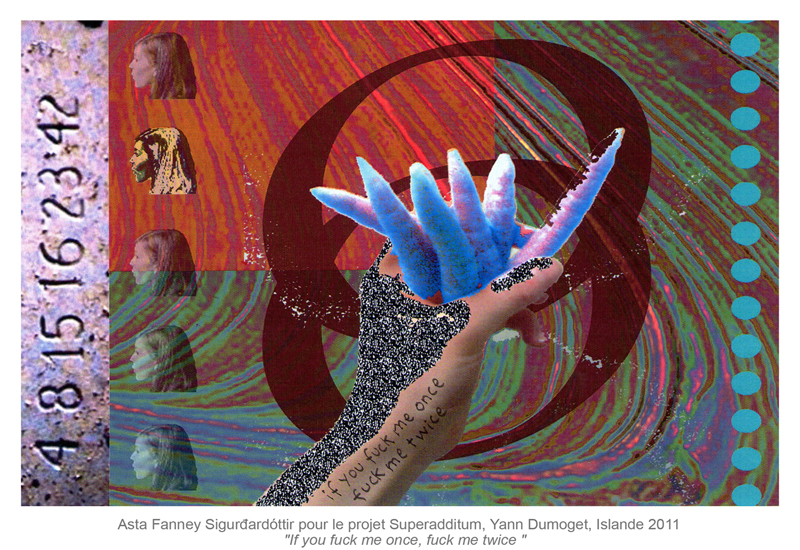The Superadditum
Work :
Action consisting of inviting each Icelander to become their own bank, to design their own currency and then to exchange their “individual banknotes” for Icelandic crowns at a floating rate negotiated with the artist.
The action was conceived as “a generous attempt to reduce the country’s debt thanks to the personal savings of the artist”, himself seriously affected by the crisis.
Location : Reyjkavick, Island. 2011
The banknote designers had two choices: Exchange their currencies for Icelandic crowns on the spot or later receive a percentage on the sale of their banknotes which had become “works of art”. It being understood that banking on the artist’s ability to exhibit them and sell them at a high price could be understood as a temptation to fall back into the pitfalls of financial speculation which had caused their loss… The participants, in addition to the counter -value in crowns, were given an “official” exchange receipt or a duplicate of the brokerage contract.
Reference text :
Reykjavik, Iceland, October 10, 2011.
As I mentioned in a previous letter, I am a bit of a numismatist, a billetophile in my spare time and this passion catches up with me when I travel. She actually played a few bad tricks on me. The day when, for example, at the Eilat border crossing, between Egypt and Israel, I placed my travel bag on the conveyor belt of a metal detector… In the seconds that followed, a deafening ringtone gave the signal that three armed soldiers were waiting for to approach me closely. » What is this ? » asked me a young customs officer in a blank voice, pointing at a strange shape on her X-ray monitor. Stared at, I was forced to open the small bag which contained the dozens of coins that I collected with relish since the start of my world tour, fifteen months earlier, and which were beginning to represent a certain mass of metal. Once the bag was opened, the coins naturally rolled in all directions. I took forever to collect them while the line of impatient travelers grew behind me with a disapproving murmur. It’s always like that when you try to be discreet… Naive, I arrived with the intention of avoiding telling the customs officials that I had a Syrian stamp on one of the pages of my passport. Of course, they were not fooled and things continued to deteriorate. But this is another story…
At the moment I am in Iceland and I went through customs without any problem. As always, I changed my money into local currencies at the airport. I did so thinking that it was precisely this act – the discovery of a new currency and all the folklore attached to it – that had brought me here. Because my presence has a direct relationship with money, paper money, virtual money too.
Touched, like everyone, by the violence of a financial crisis that never ends, I wanted to address the subject. And where to do it, if not here? In this small country which reacted in such a unique way to this crisis. Iceland reminds us that money has an eminently political nature. Making it possible to quantify a number of inter-human exchanges, it is the subject of permanent negotiations in which the cohesion of our societies is at stake. It is not for nothing that we condemn someone who kills their neighbor much less harshly than someone who prints counterfeit notes. We are talking about serious things here. And if the transactional nature of money aims in particular to resolve conflicts of interest without violence, in times of great change, it struggles to mask the enormous tensions that emerge. The readjustments are unfortunately carried out in a cold and brutal manner.
Then, the marble of the opulent investment banks turns into sand which slips away beneath our feet. Gold money turns into monkey money. A lifetime’s savings are devalued overnight. The little animal that grimaces, goaded by the prankster in the story that is the origin of this expression, is you, your parents, your grandparents… For reasons that we don’t fully understand in fact, we are removing your social benefits, we are taxing even your sodas. After the salt, the sugar: the scar left by the gabelle begins to bleed again. Finally, we are becoming aware of a reality that the declining status of a great power had made us forget for too long: In October 2011, there will be seven billion small human beings fighting equally to try to survive in an extraordinary chaos. The challenge is immense. The reactions of fear and withdrawal that it arouses just as much. This undoubtedly requires the establishment, at the right size in which things – the world – are thought of today, of a new social contract. It remains to agree on its terms and on a scale of values. This is where the crux of the problem lies… And this brings us back to money – which precisely materializes the exchanges of values – and which, more than a simple revealing element, will be one of the essential tools in the implementation implementation of this new era.
Is globalized monetary governance desirable or, as some economists seem to think, would the right system rather be to associate this entity, necessarily distant and dehumanized, with a multitude of local or virtual currencies such as SEL, BIT coin, etc. ?
In the offbeat way that those who pride themselves on dealing with a subject that goes beyond them always use, I wanted to try the experiment by pushing the reasoning to the point of absurdity: Let’s imagine that each of us creates our own bank , mints its own currency, decides on the illustration of its banknotes. Above all, let’s imagine that this currency is convertible into Icelandic crowns, or even better, that we can speculate on its exchange rate! Not by anticipating its appreciation in relation to other currencies, but by banking on the ability of the artist initiating the project (me) to increase its value!! First-degree reflection on the relationship between artists and money, on the value of art or on art as value… A little nod to traders who invest in art, a counter-cyclical investment with high returns and a machine to give extra soul to big checks full of zeros. Story of a painter who pays for others to paint for him. Who knows…

